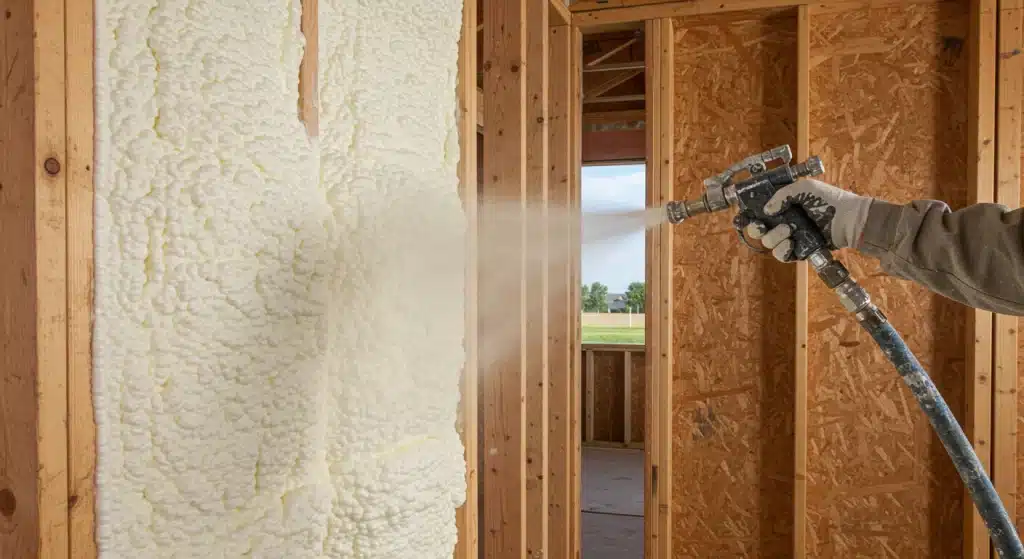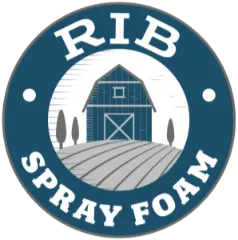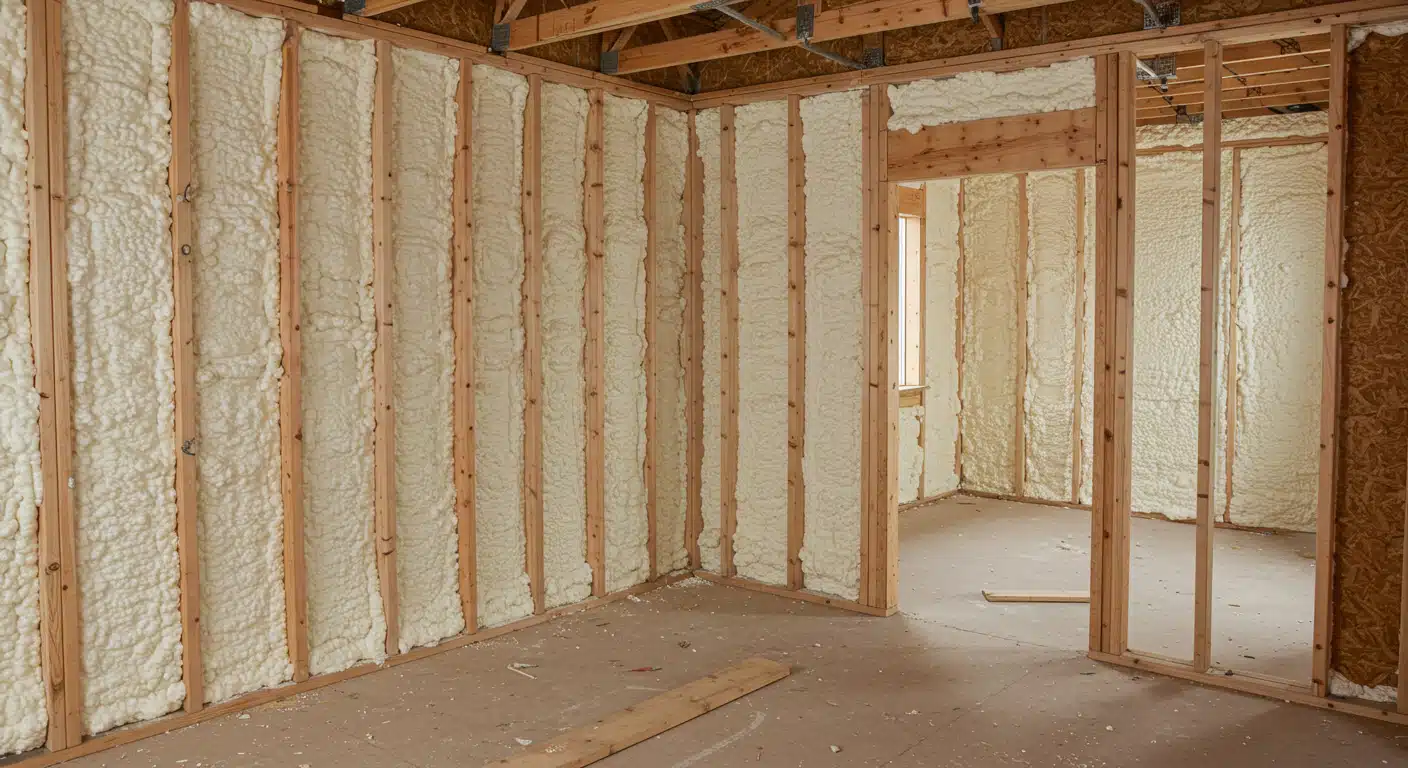Spray foam insulation remains a preferred option in Keenesburg, CO, for its air sealing capabilities and long-term thermal performance. However, several misconceptions cause hesitation or incorrect application. The most common myths involve cost, safety, effectiveness, and building compatibility. These misconceptions often stem from outdated information or anecdotal advice.
Contrary to common belief, spray foam insulation does not always cost significantly more than alternatives when measured against long-term energy savings and reduced HVAC loads. It is safe when installed properly, does not promote mold growth, and is suitable for residential and agricultural structures alike. This content outlines and clarifies the most persistent myths based on direct field experience and verified industry data.
Rib Spray Foam Company has applied insulation in varied environments across Colorado, including extreme temperature zones, metal pole barns, new residential builds, and sealed crawl spaces. This content is grounded in that practical experience, ensuring it reflects proven outcomes rather than assumptions.
Common Misconceptions and the Facts
| Myth | Reality |
|---|---|
| Spray foam insulation is always too expensive | Upfront costs are higher, but it provides long-term utility savings and increased building lifespan |
| It’s unsafe for indoor use | Once cured, closed cell spray foam is inert and safe; VOCs dissipate in under 24 hours |
| It promotes mold growth | Spray foam creates an air and moisture barrier, which helps prevent mold |
| It’s only for new construction | Retrofit applications are common and effective |
| It makes buildings too airtight | Air sealing increases efficiency; mechanical ventilation balances fresh air |
| Rodents chew through spray foam | Rodents can dig if attracted, but foam isn’t a food source and doesn’t inherently attract them |
Technical Specifications and Performance Data
| Parameter | Closed Cell Spray Foam | Typical Fiberglass Insulation |
|---|---|---|
| R-Value per inch | R-6.5 to R-7 | R-2.2 to R-3.2 |
| Air Barrier | Yes | No |
| Moisture Resistance | High | Low |
| Lifespan | 30+ years | 10–25 years (varies with conditions) |
| Application Flexibility | Crawl spaces, pole barns, walls | Mainly open walls and attics |
| Structural Support | Adds rigidity to walls | None |
Source: U.S. Department of Energy, Building America Program (2024); NAIMA Insulation Standards Report

Regional Performance Insights for Keenesburg
Keenesburg faces sharp temperature swings from hot summers to below-freezing winters. This requires insulation that resists thermal bridging and controls air leakage. Closed cell spray foam performs consistently in these conditions due to its high R-value and airtight seal.
Pole barns, common in this area, benefit significantly from interior spray foam insulation. It keeps stored goods, livestock, and tools protected from condensation and extreme temperature changes. Crawl spaces insulated with spray foam reduce cold floor drafts in winter.
Bonus Tip: Always inspect vapor barriers and ventilation systems before adding spray foam to enclosed spaces to avoid condensation buildup.
Market Data Snapshot
- A 2023 report by IBISWorld indicated a 6.2% annual growth rate in spray foam adoption across agricultural buildings in the western U.S.
- EnergyStar.gov found that homes with closed cell spray foam reduced HVAC energy consumption by 15-25% on average.
- The average insulation payback period for closed cell spray foam in cold climates is 3–6 years (based on EnergySage 2024 estimates).
Things to Consider Before Making a Decision
- Building Type: Spray foam is ideal for both wood-frame and metal buildings, but structural assessment is advised beforehand.
- Ventilation Needs: Closed cell foam seals tightly; verify if your home or building requires added ventilation post-installation.
- Climate Relevance: Choose insulation based on seasonal extremes. Foam performs well in variable conditions typical to Keenesburg.
- Budget Allocation: Consider the total cost of ownership over time, not just installation price.
- Access for Installation: Retrofit projects may need removal of existing insulation or access panels.
Bonus Tip: Plan spray foam work during moderate weather. Cold substrate temperatures can reduce adhesion and yield.
Common Questions Before Choosing Spray Foam
- Can it be installed over old insulation? No. Old insulation must be removed to ensure proper adhesion and sealing.
- Does it require special permits? Local code may require inspection but usually no special permits unless structural changes are involved.
- Is spray foam permanent? Yes, it adheres to surfaces and doesn’t settle, shrink, or degrade under normal conditions.
- How long does installation take? Most residential jobs take 1–2 days, depending on area size and prep requirements.
Relevant Services from Rib Spray Foam Company
- Closed Cell Spray Foam: Dense insulation ideal for crawl spaces, barns, and moisture-prone areas.
- Pole Barn Spray Foam: Interior foam application on metal surfaces for condensation control and thermal buffering.
- Crawl Space Spray Foam: Applied directly to rim joists and subfloors for better thermal performance.
- New Construction Spray Foam: Installed before drywalling to achieve maximum airtightness and efficiency.
Frequently Asked Questions About Spray Foam Insulation
How should spray foam be maintained?
No ongoing maintenance is typically required. Inspect visually every few years for cracks or damage in high-impact zones.
Can spray foam be applied in extreme cold?
Yes, but substrate surfaces must be above manufacturer-specified temperatures (usually 40°F+).
Is it compatible with radiant heating systems?
Yes. It improves energy efficiency by limiting heat loss through subflooring or walls.
Does it create any structural issues?
When properly applied, closed cell spray foam adds minor structural rigidity without causing deformation.
What are signs of poor installation?
Uneven foam depth, visible gaps, off-gassing odor beyond 48 hours, or improper curing are signs to watch for.



